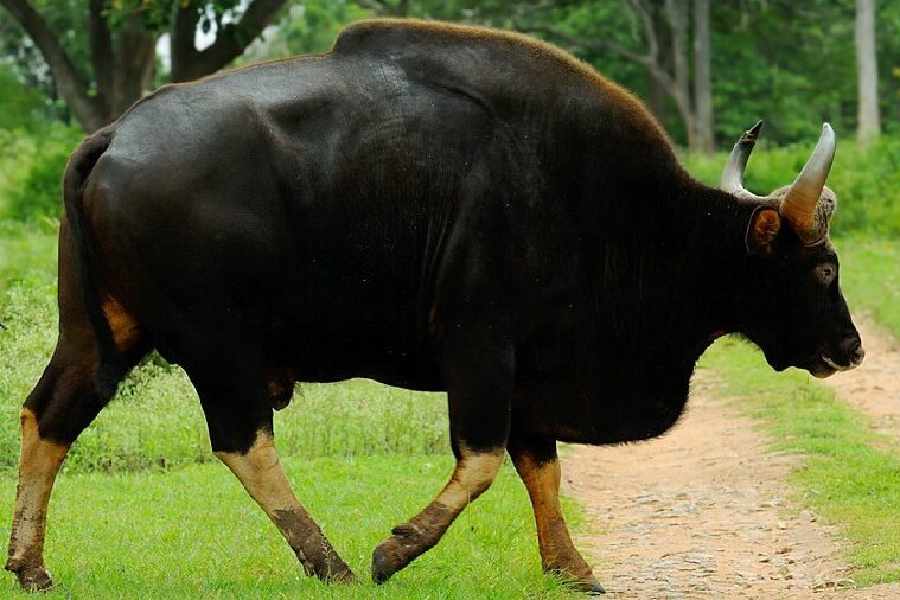Roads, railway tracks and other human-driven land use changes have disrupted genetic connectivity between populations of the gaur, the largest wild cattle species in India, enhancing the risk of their local extinction.
A study by scientists at the National Centre for Biological Sciences (NCBS), Bangalore, has revealed low genetic diversity among populations of the gaur in central India resulting from habitat loss and fragmentation of populations.
Their study, the first in India to examine how changing land has impacted large herbivores, has found populations of gaur — the top prey species for carnivores such as tigers — distributed as clusters with low genetic diversity separated by degraded habitat, roads or railway tracks.
The findings suggest that the gaur are present in small populations with little or no gene flow between them. The researchers say this is worrying because the loss of genetic exchange through mating across populations raises the risk of the local populations going extinct.
Wildlife experts have already documented the local extinctions of the gaur from several sites in central India, including the Bor tiger reserve, the Bandhavgarh tiger reserve and the Kanger Valley National Park.
“Conservation requires both numbers within populations and gene flow between populations,” said Uma Ramakrishnan, a scientist at the NCBS studying population genetics, conservation and evolutionary biology who led the study.
“We hope studies like this will spur evidence-based strategies to maintain connectivity for multiple endangered species in priority landscapes like central India," she said.
The NCBS researchers have published their findings in the journal Molecular Ecology.
An earlier study by scientists at the Wildlife Institute of India, Dehradun, had found that tigers in central India fall in four distinct genetic clusters, but three of the populations have had limited exchange of genes through mating.
“Herbivores are crucial in maintaining balance in ecosystems, yet while earlier research has focussed on connectivity for carnivores such as tigers or leopards, little is known about how herbivores respond to habitat fragmentation,” said Abhinav Tyagi, the study’s first author.
The NCBS researchers analysed genetic material or DNA from faecal samples of two large herbivores — the gaur and the antlered deer popularly called the sambar — from inside and outside protected areas in Maharashtra and Madhya Pradesh.
They studied DNA from 124 gaurs and 99 sambars in and around the Kanha and Pench tiger reserves in Madhya Pradesh and Bor, Nagzira-Nawagaon, Tadoba-Andhari and Umred-Karhandla tiger reserves in Maharashtra.
Their results suggest that the small gaur population in Umred-Karhandla is the most genetically distinct, although their populations in Nagzira-Navagaon and Tadoba-Andhari also separate into distinct clusters.
The study also revealed evidence of population admixture among the gaur in Kanha, Pench and a so-called Kanha-Pench corridor that connects the two reserves. This admixture likely is the result of the well-maintained corridor which wildlife biologists believe is also being used by tigers to move from one reserve into another, maintaining gene exchange.










